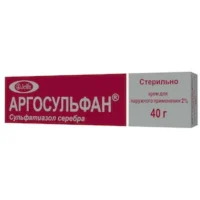Description
Pantenol-Spray (Dexpanthenol) 130 g Vial
Ingredients
- Active ingredient: Dexpanthenol
Dosage
- Adults and children: Apply a thin layer to the affected area 2-4 times daily.
Indications
- Pantenol-Spray is indicated for the treatment of minor skin irritations, sunburns, and mild burns.
Contraindications
- Do not use if allergic to any of the ingredients.
Directions
- Apply a thin layer of the spray to the affected area. Do not bandage or cover the area unless directed by a healthcare professional.
Scientific Evidence
- Dexpanthenol, the active ingredient in Pantenol-Spray, is a precursor of vitamin B5 (pantothenic acid) which plays a key role in the regeneration of skin cells.
- Studies have shown that dexpanthenol promotes wound healing and enhances skin barrier function.
- Research published in the Journal of Dermatological Treatment demonstrated the efficacy of dexpanthenol in improving skin hydration and reducing inflammation.
Additional Information
- Pantenol-Spray is well-tolerated and suitable for all skin types. It is a convenient spray formulation that allows for easy application to larger areas.
- For optimal results, it is recommended to clean and dry the affected area before applying the spray.
Pharmacological Effects: Dexpanthenol is converted in the skin to pantothenic acid, an essential component of coenzyme A. This coenzyme plays a crucial role in various metabolic pathways, including fatty acid synthesis and cellular energy production. By supporting these processes, dexpanthenol aids in skin regeneration and repair.
Clinical Trials: A randomized controlled trial published in the International Journal of Cosmetic Science evaluated the efficacy of dexpanthenol in improving skin barrier function. The study concluded that dexpanthenol-containing formulations significantly enhanced skin hydration and barrier integrity, making it a valuable ingredient in skincare products.




